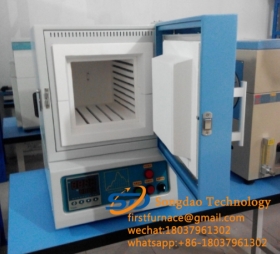- 24
- Mar
Methods to prevent oxidative decarburization of experimental electric furnace workpieces
Methods to prevent oxidative decarburization of experimental electric furnace workpieces
1. Surface coating paste
The method of coating paste on the surface of the workpiece is low in cost, simple in operation, and does not require special equipment.
Although the method of applying the paste is simple and convenient, there is a danger of cracking and peeling of the paste during the heating process, which may still cause local oxidation and decarburization. At the same time, the paste exists on the surface of the workpiece, which will affect the quenching quality, and the quenched workpiece is not easy to clean. And, the work piece coated with paste will generate a lot of smoke when heated, which will affect the use of the electric furnace.
2. Charcoal powder coverage
Use charcoal powder, or add appropriate amount of iron filings and slag (grain size 1~4mm) to the charcoal powder as a protective agent, cover the workpiece and heat it in the furnace, which can effectively prevent the workpiece from oxidizing decarburization reaction. This method is simple and easy to implement, and the cost is low, but the heating time needs to be extended appropriately.
3. Prevention of special-shaped workpieces
For some special-shaped workpieces, it is difficult to prevent oxidative decarburization by paste coating or charcoal powder coating. At this time, a certain amount of charcoal powder can be placed in the furnace with a tray, and then the furnace temperature can be increased to a higher level. The temperature needs to be higher than 30~50℃, so that charcoal interacts with air to generate a sufficient amount of carbon, so that the gas in the furnace is in a neutral state, and then special workpieces are loaded, which can reduce or prevent the phenomenon of oxidative decarburization.

